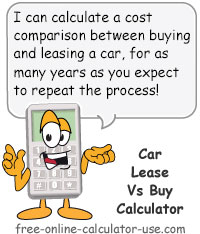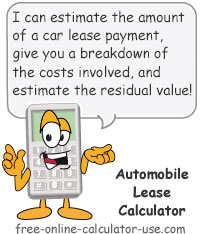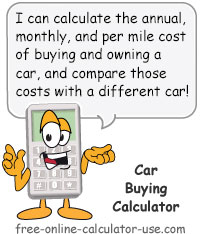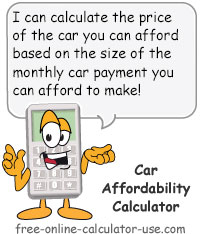IMPORTANT: Numeric entry fields must not contain dollar signs, percent signs, commas, spaces, etc. (only digits 0-9 and decimal points are allowed).
Click the Terms tab above for a more detailed description of each entry.
Step #1:
Enter the purchase price of the car.
Step #2:
Enter the down payment amount, if applicable.
Step #3:
Enter the sales tax percentage that will apply to the purchase or lease.
Step #4:
Enter the percentage you would expect to earn on your investments.
Step #5:
Enter the number of years you want the calculator to repeat the buy or lease scenario.
Step #6:
Enter the number of months for the lease and the number of months for the car loan.
Step #7:
Enter the money factor for the lease and the annual percentage rate for the car loan.
Step #8:
Enter any upfront fees that will be paid at the start of the lease, and the upfront fees that would apply to the car purchase.
Step #9:
Enter the residual percentage for the lease and the depreciation percentage for the car purchase.
Step #10:
Enter the security deposit required for the lease and the number of years would expect to own the car if you were to purchase it instead of lease it.
Step #11:
Click the "Calculate Lease Vs Buy" button and scroll down to see the results.





Follow me on any of the social media sites below and be among the first to get a sneak peek at the newest and coolest calculators that are being added or updated each month.